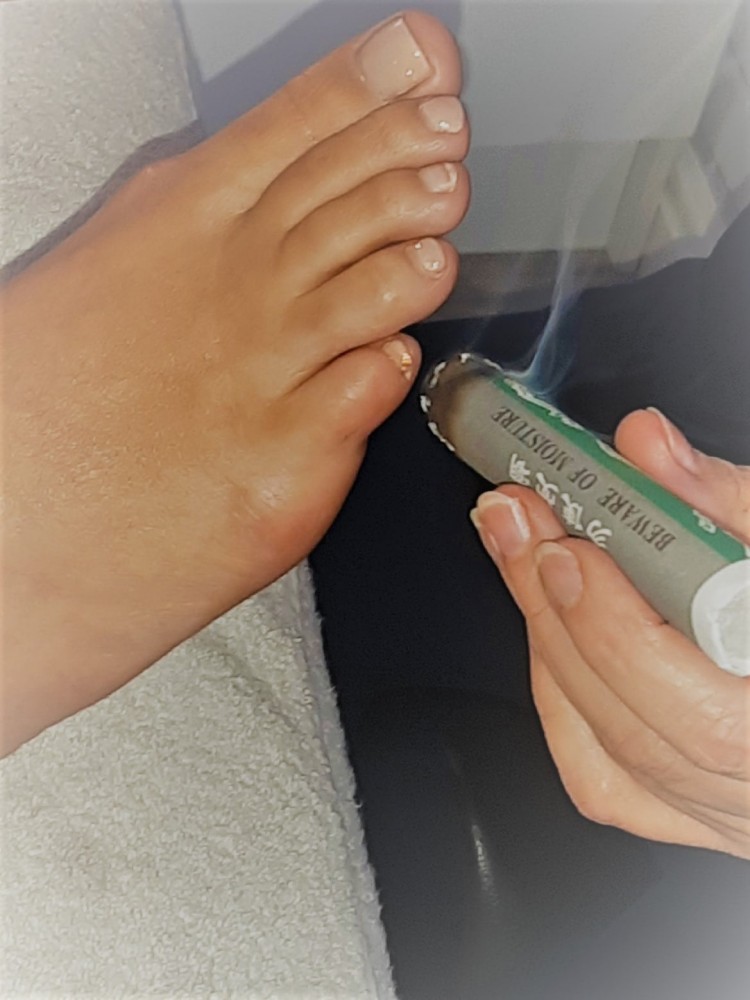Breech Position
My baby is still in breech? What now? Explanations and possibilities from Dr. Christine.
Breech position - and now?
In about 3% of the pregnancies, the baby does not turn in the common position, so that the head lies down in the pelvis.
Instead, the head lies directly below the mother's ribcage. The baby's legs are either strongly bent, so that it sits as if folded up in the abdomen. The breech is leading (breech position) or the baby is lying with one or both feet in front (foot position) or it is crouching with the feet next to the breech (breech-foot position).
Up to week 34, a spontaneous turning of the child into the cranial position is still possible.
However, if the baby remains in its position, you can try to gently encourage the baby to turn over.
Possibilities to turn your baby - there are several ways to do this.
- First, the pregnant woman can do various exercises.
- The best known is the Indian bridge. Twice a day, the pregnant woman lies on her back for 10-15 minutes. The shoulders remain firmly on the floor and the legs are hip-width apart and positioned. Now the pregnant woman raises her pelvis. This position is difficult to hold for so long, so you can place a rolled blanket or thick pillow under the pelvis and rest the lower legs on a stool or sofa, for example. This position allows the baby's bottom to slide out of the mother's pelvis, making it easier for the baby to turn into the cranial position.
- Another exercise is the knee-chest position. This should also be held twice a day for a few minutes. The mother-to-be kneels on a mat with her face, upper body and forearms touching the floor. The bottom stretches up into the air. This position also encourages turning.
- You can also try the torch method. The child is encouraged to turn with a torch (the baby recognizes the light). Of course, the torch must move slowly from the ribcage, where the head is, to the lower abdomen. Here it is crucial to know where the baby's back is. The child rarely does a backward somersault. A music box can also be used in this way. Babies are very curious, even in the womb.
- Osteopathy/cranio-sacral therapy can also encourage the child to turn. By lowering the muscle tone and de-stressing the pelvic bones, the child's freedom of movement can be increased. It is important to make sure that a therapist is trained in this method.
- If the parents do breathing and relaxation exercises together, this can lead to relaxation of the muscles. Gentle pressure on the child's upper back and good coaxing from the parents can also sometimes make a big difference.
- One method that has also been scientifically studied is moxibustion or moxing. This method of traditional Chinese medicine works with a punctual heat stimulation of the acupuncture point bladder 67 on the outside of the little toe. The treatment lasts 20 minutes and is carried out a maximum of three to four times at intervals of two days each (unless the child has turned in the meantime). The treatment is possible between the 34th and 37th week of pregnancy.
- Hospitals often offer the "external turn". The doctor feels the position of the baby through the abdominal wall and guides the baby to roll forward or backward. During this process, the child is always monitored by CTG. In some clinics, a medicament to avoid contractions is given to the woman. A turn can only be performed if there is enough amniotic fluid. In addition, the position of the umbilical cord must be precisely assessed by ultrasound. A risk here is certainly premature labour, premature rupture of the membranes and a conspicuous CTG in the child. For this reason, an external reversal is only carried out if the baby is ready for a caesarean section and at most 4 weeks before the date of delivery.
- Purzelbaum Öl - Tumbe Oil to massage your belly with has also had good results. Picture below.
Which method is the right and best?
Well, you can't say. Since the most invasive method, the external turn, is only performed shortly before the delivery date, there is nothing to be said against trying out all the other somewhat gentler methods. The important thing is that the gynaecologist has given the go-ahead, i.e. that there are no reasons against a turn. As with everything during birth, the most important thing is to relax and let go. This is the only way to release the muscle tension and make it much easier for the baby to get into another position.
What happens if a turn does not work or is not possible?
Vaginal Birth
You can deliver a baby vaginally from a breech position. There are clinics in every city that do this more often than others. If you are in this situation, find out which clinic in your area is the most experienced. This is because the experience of the obstetricians is the most important factor in a vaginal breech delivery.
The birth process in a vaginal birth is somewhat more strenuous for a baby in breech than in cranial position. The child has to follow the birth path with its rump and turn just as if it were coming head first. As soon as the bottom is out, the head slides into the pelvis. This is a crucial moment because there is a lot of pressure on the head here and the oxygen supply can easily be reduced. Therefore, the baby must then be born completely quickly. In order for the head to fit well through the pelvis, the midwife turns and lifts the child with certain hand movements. This is why experience is so important here.
So why is a breech delivery so special? Because it is not the head that goes first, which is the widest part of the body, there is not so much pre-stretching of the pelvis and the pelvic floor muscles. As a result, the birth of the baby usually takes longer. It is precisely because the body is born for a moment and the head is not yet, that the risk of oxygen deficiency increases. An epidural is often recommended because it gives the mother maximum muscle relaxation and makes the birth easier.
C-Section
However, many women, especially first-time mothers, decide to have a planned c- section. There are also some medical reasons which can speak in favor of it.
In the case of a premature birth, a caesarean section should be performed to protect the baby from pressure and unnecessary stress. A disproportion between the mother's pelvis and the child can also be a reason. This must be considered very carefully in advance. Such a diagnosis must always be precisely justified. In the past, it was often made unnecessarily. In addition, an unusual position of the umbilical cord could argue for a caesarean section.
Summary
When deciding which procedure is best, the history of the pregnancy, the couple, the child and the general circumstances must always be taken into account. It is important that you as a couple are involved in the decision. Only you can feel inside yourself and decide whether the procedure suits you and feels right. As with everything, listen to yourself and your feelings. Trust and stand by yourself and try to approach the whole thing as calmly and relaxed as possible. We can't change some things, but we can accept them and find a way to stay true to ourselves.
Juli 2021 - Gravidamiga
This blog post has been prepared with the greatest possible care and does not claim to be correct, complete or up-to-date.“ This is not a medical post and it does NOT substitute a visit to a doctor.
Tell someone of us today - thank you!
https://www.instagram.com/gravidamiga/
https://www.facebook.com/gravidamiga
and sign up for our weekly Gravidamiga Newsletter.
or check out our partner page for more general information about life in Stuttgart with an extensive blog:
Kiramiga - beyond relocation.
We love what we do and hope you love it, too.
Please support us and our work by donating us a coffee or a prosecco :-)
Thank you.
Updated: January 2022
Posted in in Medicine & Psychology, Pregnancy & Birth





